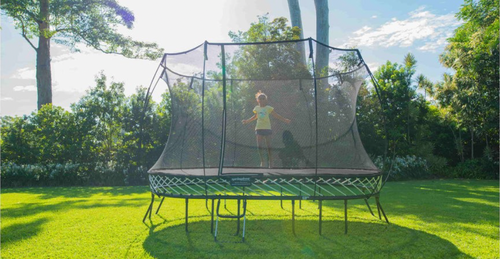
Rebounders and trampolines vary significantly from each other.
If you’re deciding between a rebounder and a trampoline, you must understand these differences to make the right decision.
As the innovators of the springless trampoline, we have decades of trampoline expertise and will use that insight to give you direct answers to whether you should buy a rebounder or trampoline.
What Is a Rebounder?
Rebounders, or mini trampolines, are smaller trampolines (around 2-4 ft in diameter) that are used exclusively for exercise.
Typically, rebounders include a metal frame with a fabric or mesh jumping surface. Most will use metal springs to provide the bounce, but bungee cords may also be used.
Invented in the 1930s, rebounders gained popularity in the 1980s – which was the same time NASA released a ground-breaking study on the effectiveness of trampoline jumping.
Rebounder benefits include increased cardiovascular system, improved balance, bone growth, weight loss and lymphatic system stimulation.
A rebounder, courtesy of Amazon:
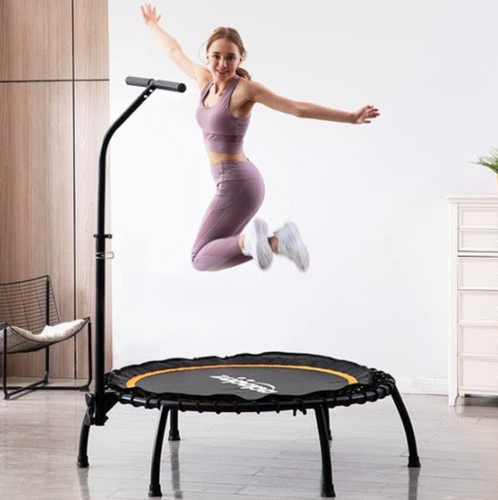
What Is a Trampoline?
When we say trampoline, we’re talking about outdoor trampolines. You may have had one growing up.
Trampolines are usually at least 6 ft wide, typically sit high above the ground and are used for both recreational jumping and exercise.
You can likely picture one in your head: The black mat, the metal springs with the padding over them, the enclosure net.
Trampolines became a staple in gardens in the mid-20th Century as a fun way for kids to burn off energy and stay outdoors.
There are many health benefits of trampolines, similar to the rebounder benefits explained above. Trampolines are also great for destressing the mind and body and are a fun way to stay consistently active.
A trampoline, courtesy of Wayfair:
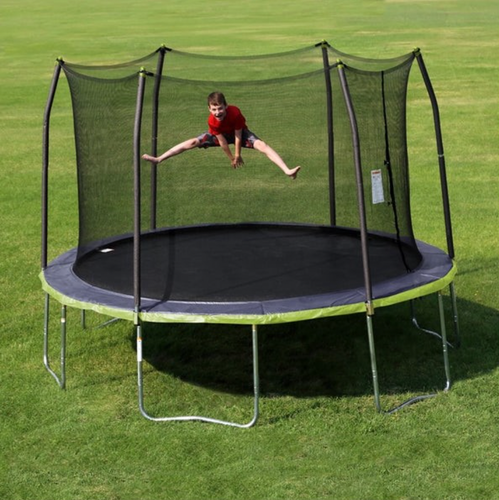
Rebounders vs. Trampolines (5 Differences)
Difference #1: Intended Use
Rebounders are for exercise; trampolines are for fun. While these two statements won’t always apply (trampolines can be used for exercise too), it’s a good way to remember them.
If you buy a rebounder, you’re likely an adult looking for a way to exercise indoors. If you buy a trampoline, you probably have kids and want an activity for them to play outdoors.
Trampolines are more versatile than rebounders, offering the chance to play trampoline games, exercise or jump freely.
Difference #2: Size/Jumping Space
Rebounders are small trampolines that offer enough space to bounce for a workout. However, you’re not going to be doing flips on a rebounder (or at least you shouldn’t).
A pro to rebounders is they can easily fit inside your living room or workout area.
Trampolines, on the other hand, are much larger than rebounders and offer plenty of space to jump. You will need to make room in your garden for a trampoline’s size.
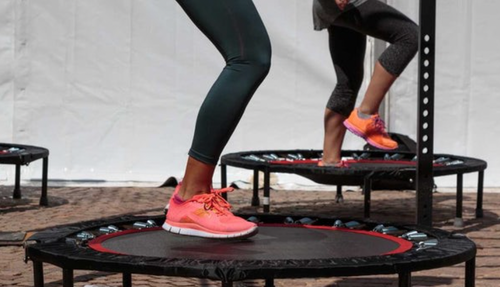
Difference #3: Trampoline Cost
Rebounders will typically be cheaper than trampolines.
You can find cheap rebounders for £25-£100. High-quality rebounders will be more expensive (£200-£1000+).
Trampolines can also go for less than £200. However, expensive trampolines cost over £4,000.
Difference #4: Portability
Rebounders can be moved with relative ease. Since they are structurally small, you can move a rebounder all around the house.
You can move a trampoline, but it will be more difficult. You will need multiple people to lift the trampoline or you can use trampoline wheels to transport it.
If you choose to install an inground trampoline, then you won’t be able to move the trampoline without completely uninstalling it (which takes a lot of time and money!).
Difference #5: Trampoline Installation and Maintenance
Generally, rebounders will be easier to assemble and maintain than a trampoline.
For rebounders, you may only need to clean the surfacing every now and then or tighten bolts and screws.
Trampolines, however, may require you to replace trampoline parts. Springs on traditional trampolines will need to be replaced every 2-3 years. The enclosure net and jumping mat will also need to be replaced on most trampolines at some point.
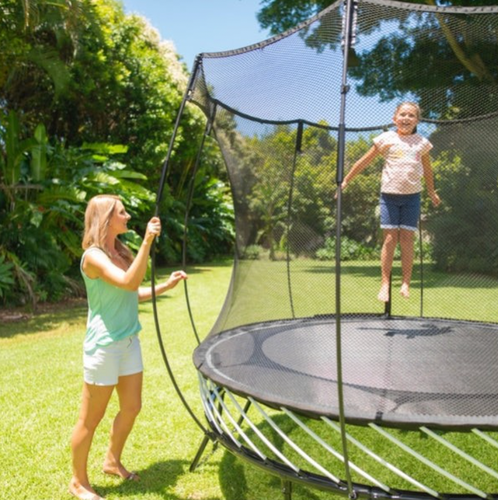
The Bottom Line on Rebounders vs. Trampolines
Once you know the differences, it’s not too difficult to figure out whether you need a rebounder or a trampoline.
You need a rebounder…If you’re looking for an exercise trampoline that can fit in your house and be easily moved.
You need a trampoline... If you have kids and want a trampoline for fun and exercise.
If you’re an adult and want a trampoline for exercise only, then buy a good quality rebounder. You can also join organized classes designed around rebounders if you don’t want to buy a personal one.
The only reason you will want to purchase a trampoline instead is if you need more space to jump when exercising. But the space a trampoline takes up + the cost to buy one may not be worth it if exercise is your only goal.
However, if you have children, then an outdoor trampoline would be more fitting. Not only would it be fun for the kids, but you could also use it to achieve your fitness goals (and channel your inner child!).
Best Rebounders to Buy This Year
If you’re in the market for a rebounder, there are many options to choose from. In our “Best Trampolines for Adults” List, we highlighted three best rebounder trampolines.
We surveyed various rebounding sources, customer reviews and used our internal experts to come up with the three rebounders below:
Best Rebounders to Buy This Year | Cost |
|---|---|
£130 | |
£329 | |
£887 |
*These are ranked from least to most expensive. We have no affiliation with these companies.
Best Trampolines to Buy This Year
Best Rebounders to Buy This Year | Cost |
|---|---|
£357 | |
£1,067 | |
£1,495 |
Is Trampoline Exercise the Answer for You?
If you read through this article, you’re likely interested in bouncing as a fitness solution.
That’s great because that same NASA study we cited earlier found that bouncing on a trampoline is 68% more effective than jogging. And it requires less effort (who wouldn’t like to do less for more?).
But trampoline exercise won’t be for everybody. In fact, if you’re trying to build strength or have a spine condition, we would advise you to steer clear of rebounders or trampolines.
However, we’ll let you be the judge. Check out our expert analysis of the pros and cons of trampoline exercise and make sure trampoline jumping is right for your fitness goals before you open your wallet.






